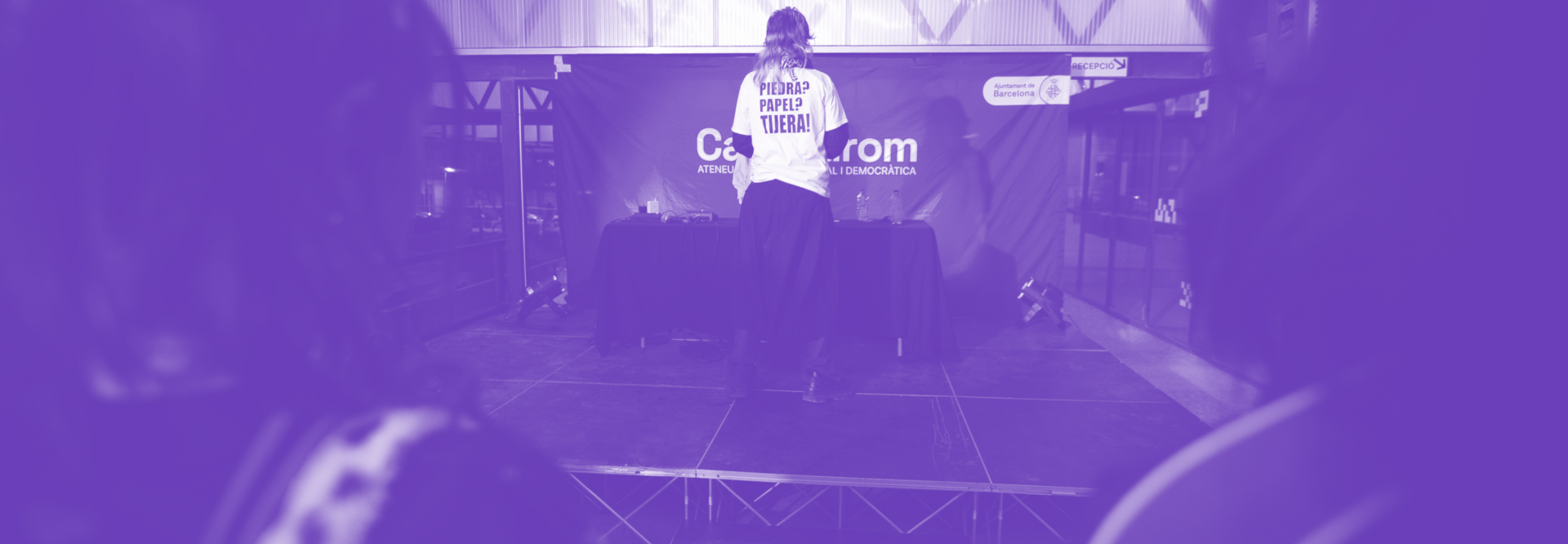Changes at "Session 3 | AI, Communication and Journalism"
Description (English)
-
-
The application of artificial intelligence in the world of communication has opened a window of opportunity, with a dark enough slit of challenges. Communicators have at their disposal tools that write content in a few seconds. Journalists can access software that generates automatic images, which have already made the front pages of national and international newspapers. Where is the border between tools to facilitate the work of journalists, and tools to replace journalists? How does the use of these tools affect journalistic precision and disinformation? What is happening in catalan newsrooms?
A few years ago, people thought about how social networks would replace the journalistic task, turning all people into communicators and content creators. What does the normalization of artificial intelligence by the information and communication sector mean? What effect does it have on journalism to apply tools that facilitate technocorproacions disrespectful of privacy and the rights of individuals? Will we go back to singing "video killed the radio star"?
In this session we have Patricia Ventura, doctor by the UAB specialized in the application of algorithms to newsrooms, Judith Membrives, digitization technician at Lafede.cat, Carles Planas Bou, technology journalist at El Periódico, and Enric Borràs, deputy director of the newspaper AHORA. The cycle continues with:
📌Organized by: Canòdrom - Ateneu d'Innovació Digital i Democràtica
📸 The image of the cycle is a creation of Taller Estampa -
+
The application of artificial intelligence in the world of communication has opened a window of opportunity, with a dark enough slit of challenges. Communicators have at their disposal tools that write content in a few seconds. Journalists can access software that generates automatic images, which have already made the front pages of national and international newspapers. Where is the border between tools to facilitate the work of journalists, and tools to replace journalists? How does the use of these tools affect journalistic precision and disinformation? What is happening in catalan newsrooms?
A few years ago, people thought about how social networks would replace the journalistic task, turning all people into communicators and content creators. What does the normalization of artificial intelligence by the information and communication sector mean? What effect does it have on journalism to apply tools that facilitate technocorproacions disrespectful of privacy and the rights of individuals? Will we go back to singing "video killed the radio star"?
In this session we have Patricia Ventura, doctor by the UAB specialized in the application of algorithms to newsrooms, Judith Membrives, digitization technician at Lafede.cat, Carles Planas Bou, technology journalist at El Periódico, and Enric Borràs, deputy director of the newspaper AHORA. The cycle continues with:
📌Organized by: Canòdrom - Ateneu d'Innovació Digital i Democràtica
📸 The image of the cycle is a creation of Taller Estampa
Description (Català)
-
-
L’aplicació de la intel·ligència artificial en el món de la comunicació ha obert una finestra d’oportunitats, amb una escletxa prou fosca de reptes. Les comunicadores tenen a la seva disposició eines que redacten contingut amb pocs segons. Les periodistes poden accedir a programari que genera imatges automàtiques, i que ja han ocupat portades de diaris nacionals i internacionals. On està la frontera entre eines per facilitar la feina als periodistes, i eines per substituir als periodistes? Com afecta l'ús d’aquestes eines al rigor periodístic i a la desinformació? Què està passant en les redaccions catalanes?
Fa uns anys es reflexionava sobre com les xarxes socials substituirien la tasca periodística, convertint a totes les persones en comunicadores i creadores de contingut. Què suposa la normalització de la intel·ligència artificial pel sector de la informació i la comunicació? Quin efecte té en el periodisme aplicar eines que faciliten tecnocorproacions irrespectuoses amb la privacitat i els drets de les persones? Tornarem a entonar «video killed the radio star»?
En aquesta sessió comptem amb Patricia Ventura, doctora per la UAB especialitzada en l’aplicació dels algoritmes a les redaccions, Judith Membrives, tècnica de digitalització a Lafede.cat, Carles Planas Bou, periodista tecnològic a El Periódico, i Enric Borràs, subdirector del Diari ARA. El cicle segueix amb:
📌 Organitza: Canòdrom - Ateneu d'Innovació Digital i Democràtica
📸 La imatge del cicle és una creació de Taller Estampa -
+
L’aplicació de la intel·ligència artificial en el món de la comunicació ha obert una finestra d’oportunitats, amb una escletxa prou fosca de reptes. Les comunicadores tenen a la seva disposició eines que redacten contingut amb pocs segons. Les periodistes poden accedir a programari que genera imatges automàtiques, i que ja han ocupat portades de diaris nacionals i internacionals. On està la frontera entre eines per facilitar la feina als periodistes, i eines per substituir als periodistes? Com afecta l'ús d’aquestes eines al rigor periodístic i a la desinformació? Què està passant en les redaccions catalanes?
Fa uns anys es reflexionava sobre com les xarxes socials substituirien la tasca periodística, convertint a totes les persones en comunicadores i creadores de contingut. Què suposa la normalització de la intel·ligència artificial pel sector de la informació i la comunicació? Quin efecte té en el periodisme aplicar eines que faciliten tecnocorproacions irrespectuoses amb la privacitat i els drets de les persones? Tornarem a entonar «video killed the radio star»?
En aquesta sessió comptem amb Patricia Ventura, doctora per la UAB especialitzada en l’aplicació dels algoritmes a les redaccions, Judith Membrives, tècnica de digitalització a Lafede.cat, Carles Planas Bou, periodista tecnològic a El Periódico, i Enric Borràs, subdirector del Diari ARA. El cicle segueix amb:
📌 Organitza: Canòdrom - Ateneu d'Innovació Digital i Democràtica
📸 La imatge del cicle és una creació de Taller Estampa


.png)


Share